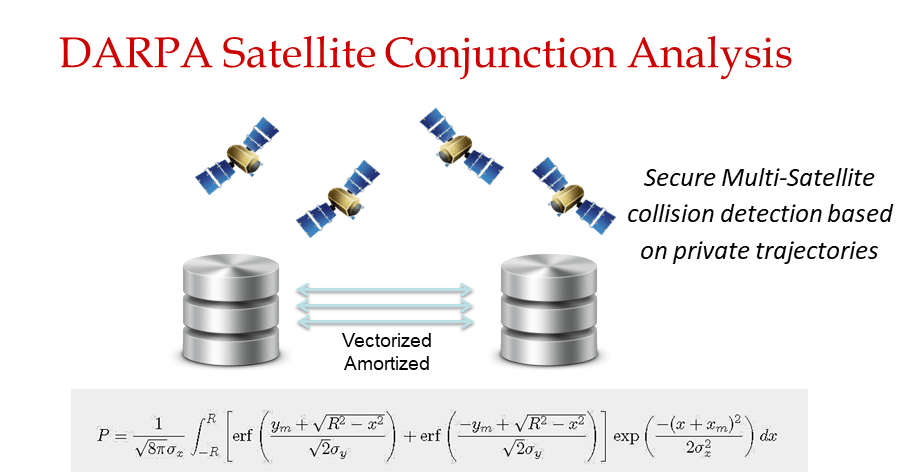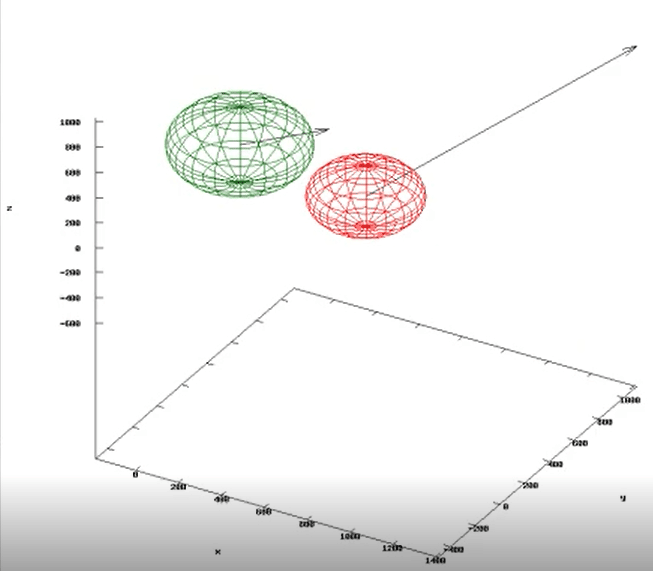
As the number of satellites in the sky grows, so does the risk of devastating and costly collisions. Currently, there are approximate monitoring systems that detect possible collisions, but only the owner of a satellite knows its true position and trajectory. Because this data is highly sensitive, satellite owners are frequently unwilling to share it directly with competitors or foreign agencies. Instead, these participants currently entrust their data to a third party to perform what is known as a conjunction analysis, a high-fidelity estimate of the probability of collision.
A report from the RAND Corporation proposed the possibility of using cryptographic tools from the domain of secure Multiparty Computation (MPC) to enable satellite operators to perform these conjunction analyses without sharing private information about the trajectories of their satellites. As part of DARPA’s Cyber Fast Track program, Stealth built an MPC solution in which each party holds precise telemetry data for objects in space (e.g., satellites) and can securely compute the probability of a conjunction (collision) with another party – without revealing to any other party its own trajectory data.

In order to build our solution, we researched new ways of building secure multiparty computation systems that can support high-precision calculations. In particular, our solution involves linear algebra computations under MPC to set up the collision parameters, followed by secure computation of a numerical approximation of a volumetric double integral. The complexity of the calculation and the possibility of numerical instability presents many challenges for MPC protocols – which typically model calculations as simple integer arithmetic or binary circuits – that our solution overcomes. Our MPC solution was validated by external testing with the RAND Corporation. Techniques developed in this work could potentially have a wider impact on secure numerical analysis computations, and our solution accordingly unlocks the potential of enabling a general secure numerical computation platform.
This work was supported by DARPA, Distribution Statement A: “Approved for Public Release, Distribution Unlimited. If you have any questions, please contact the Public Release Center”. The views, opinions and/or findings expressed are those of the author and should not be interpreted as representing the official views or policies of the Department of Defense or the U.S. Government.
